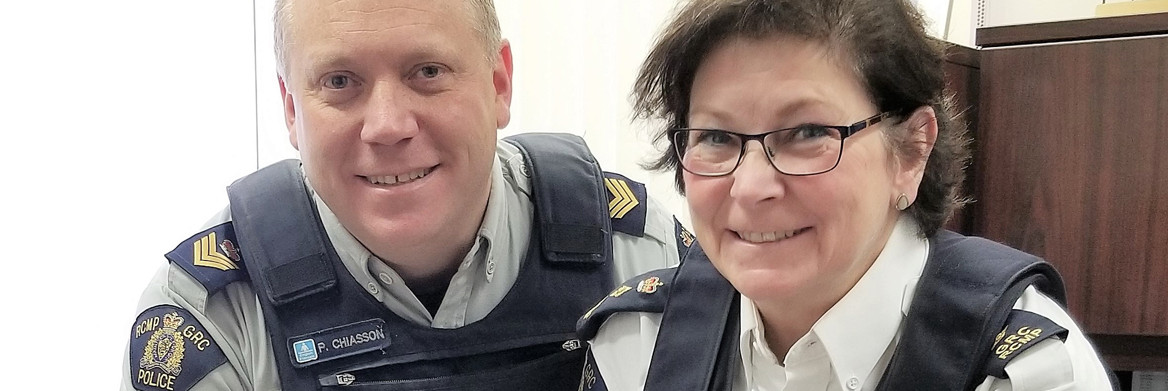Many Indigenous communities across Canada, with support from their local RCMP, have launched community safety planning initiatives to help improve the lives of their residents.
For some communities, the work is well underway. For others, including members of the Esgenoopetitj First Nation in New Brunswick, it's relatively new.
In all cases, the RCMP or other local police forces are involved in the initiative along with community partners ranging from health-care officials, schools, youth and Elder representatives, and others. The goal of their work is the same — to create a safe place to live while respecting everyone's culture and specific needs.
"The planning process will help the communities identify risks to safety and develop their own plan to address and improve it," says Supt. Shelly Dupont, the New Brunswick RCMP's Northeast District Commander, who attended an earlier safety planning meeting in 2019. "It's different and effective because it's led by the community."
Kyana Kingbird is the community safety program co-ordinator at Esgenoopetitj, which is also known as Burnt Church.
"We want to make the entire community safer but we really have to look at the deeper issues, deal with them and help people thrive," she says. "We want to work with the RCMP and build a strategy that helps all parts of the community. And part of that is to deal honestly and openly with all our partners."
Tailored approaches
The project, officially known as the Aboriginal Community Safety Planning Initiative (ACSPI), began in 2010 with the support of Public Safety Canada. It was renewed in 2014 as part of the federal government's Action Plan to Address Family Violence and Violent Crimes against Aboriginal Women and Girls.
By developing a safety plan, Indigenous communities create tailored approaches to address local needs. Core group meetings are held with a facilitator funded by Public Safety Canada to discuss the community's history, its needs and to set priorities. That process continues until the plan is developed.
The first meeting in Esgenoopetitj was held in February 2019.
"It was a two-day workshop and everyone talked and listened," says Dupont, who added the discussion included everything from substance abuse, violence and prostitution, to animal control and the need for more street lights.
Kingbird started her work in July and knows her community faces those problems and others.
She adds it's important to discuss the root causes of the communities' issues.
Digging deep
Between 1999 and 2002, tempers flared during the Burnt Church Crisis. During that period, community members said they had the right to catch and sell lobster out of season, which resulted in sometimes violent clashes between non-Indigenous and Indigenous fishers.
"The tensions that created have never been relinquished and still need to be mediated," says Kingbird.
There's also the 2009 case of Hilary Bonnell, a 16-year-old girl who disappeared and was later found murdered. Both Bonnell and the man charged and convicted of her murder were members of the Esgenoopetitj First Nation.
"That had a big impact on the community — especially the young people," recalls Kingbird.
She says initiatives to connect youth and Elders with their community's history also need support so both groups don't engage in harmful behaviours.
RCMP Sgt. Pierre Chiasson, who's involved in the safety planning with Esgenoopetitj, says police want to connect with all the partners in a meaningful way.
We have to begin building those strong relationships because safety planning is crime prevention at its very root," he says.
Kingbird adds that the plan's success can't be measured by a series of checklists.
"We're fully committed to achieving them, but we need to have the entire community feel comfortable and know everyone respected the process."
